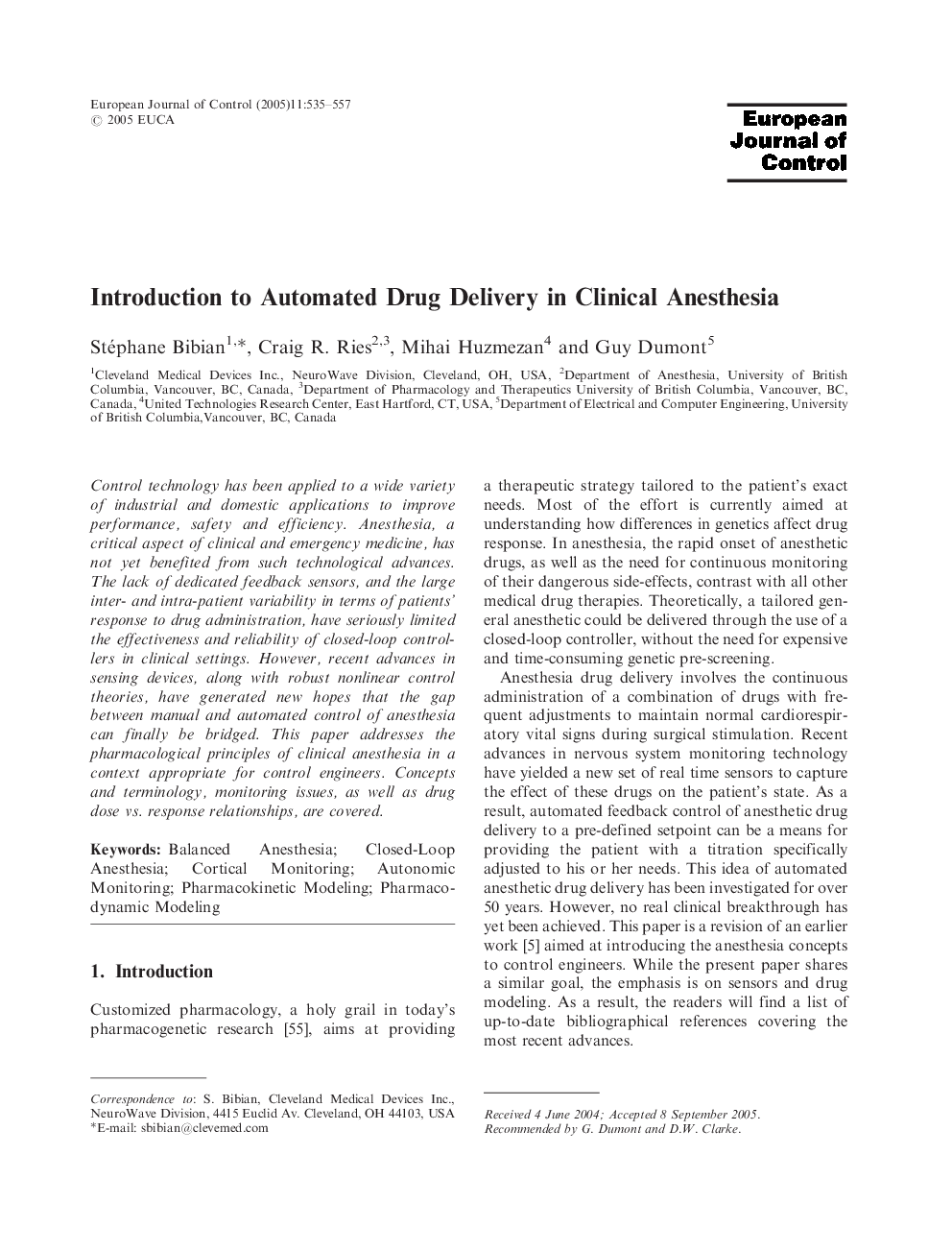| Article ID | Journal | Published Year | Pages | File Type |
|---|---|---|---|---|
| 9698042 | European Journal of Control | 2005 | 23 Pages |
Abstract
Control technology has been applied to a wide variety of industrial and domestic applications to improve performance, safety and efficiency. Anesthesia, a critical aspect of clinical and emergency medicine, has not yet benefited from such technological advances. The lack of dedicated feedback sensors, and the large inter- and intra-patient variability in terms of patients' response to drug administration, have seriously limited the effectiveness and reliability of closed-loop controllers in clinical settings. However, recent advances in sensing devices, along with robust nonlinear control theories, have generated new hopes that the gap between manual and automated control of anesthesia can finally be bridged. This paper addresses the pharmacological principles of clinical anesthesia in a context appropriate for control engineers. Concepts and terminology, monitoring issues, as well as drug dose vs. response relationships, are covered.
Related Topics
Physical Sciences and Engineering
Engineering
Control and Systems Engineering
Authors
Stéphane Bibian, Craig R. Ries, Mihai Huzmezan, Guy Dumont,
